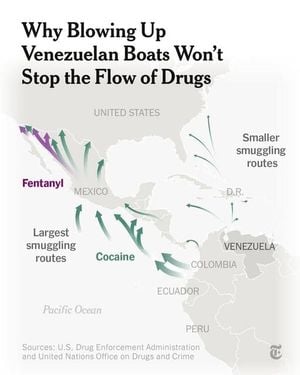On March 21, 2025, gold prices fell below 100 million VND per lượng in Vietnam as global gold prices fluctuated amid economic uncertainties and rising geopolitical tensions. As of 13:40 on that day, the spot gold price was recorded at 3,033.04 USD per ounce, a decrease of 3.7 USD (0.12%) from the preceding day, according to Kitco.
This decline in international gold prices resulted in the domestic gold market adjusting its rates accordingly. In Vietnam, SJC gold bars were trading at 96.4 - 98.9 million VND per lượng (buying – selling) at 1:10 PM. Meanwhile, the prices offered by Phu Quy Group and Bao Tin Minh Chau were slightly lower, with buy prices at 96.6 million VND and selling prices at 98.9 million VND, marking a reduction of 1.4 million VND on the buying side compared to the previous session. Gold rings, particularly from the PNJ brand, were also affected, with buying prices in Hanoi and Ho Chi Minh City at 97.1 million VND per lượng, down 1 million VND from the day prior, and selling at 99.2 million VND.
Returning to the global market, around the same time, gold hit a high of 3,040.23 USD per ounce early on March 21, exhibiting a slight recovery of 0.27% compared to the previous day's close of 3,036.13 USD per ounce, partly fueled by speculation around potential interest rate cuts by the U.S. Federal Reserve (Fed) and ongoing economic instability.
Experts noted that despite the slight recovery, gold prices had peaked following a historical surge. Alex Ebkarian, CEO of Allegiance Gold, commented on this trend: "Speculators are trying to exploit the market and lock in profits. I think that every time gold hits a high level, we are going to see some resistance. Gold hasn't even operated as a safe haven asset for retail investors because technically, we are not in a recession yet. However, we are witnessing an economic slowdown, which could create more instability and greater demand for safe-haven assets."
On the side of the U.S. economy, the Fed's chair, Jerome Powell, pointed out that former President Trump's initial policies, including extensive tariffs, may have hindered U.S. economic growth and spurred inflation. Trump's critiques over the Fed's decision to maintain interest rates, despite forecasts predicting two rate cuts, each by 0.25%, by year-end raised eyebrows.
Market analysts have been pricing in 69 basis points of rate cuts from the Fed this year, with expectations for at least two 0.25% reductions, including a projected cut in July. Citi Research, meanwhile, has adjusted its three-month gold price target upward to 3,200 USD per ounce, fueled by robust demand from ETFs and governmental purchases. The firm also forecasts potential peaks of gold prices reaching 3,500 USD per ounce by the end of 2025.
In the broader economic context, troubling geopolitical developments were also affecting market conditions. For instance, at least 70 Palestinians were reported killed due to Israeli airstrikes in Gaza, underscoring rising tensions in the region. Notably, gold typically performs well during periods of low-interest rates, providing a hedge against instability.
Moving onto the oil market, both Brent and WTI crude prices recorded increases amid news of new U.S. sanctions targeting Iran. On March 20, Brent oil surged by 1.22 USD, or 1.72%, reaching 72 USD per barrel, while WTI oil for April delivery climbed by 1.1 USD, or 1.64%, hitting 68.26 USD per barrel. Concurrently, WTI for May delivery rose to 68.07 USD per barrel, marking a similar uptrend.
These increases in oil prices came as a reaction to the U.S. imposing sanctions on a Chinese oil refinery and vessels supplying crude oil, critical for Iranian exports. This marked the fourth round of sanctions from the U.S. under former President Trump’s campaign of 'maximum pressure' on Iran, which reportedly produces over 3 million barrels daily.
Phil Flynn, a senior analyst at Price Futures Group, noted that recent sanctions might spur further price increases in oil. Additionally, OPEC+ has implemented new production cuts among seven member countries, including Russia, Kazakhstan, and Iraq, set to last until June 2026, targeting a production reduction of about 189,000 to 435,000 barrels daily.
In light of these dynamics, U.S. oil inventories have unexpectedly increased by 1.7 million barrels, three times higher than analysts’ expectations of a 512,000-barrel rise, which partly tempered the price increase. Despite this, ongoing tensions in the Middle East and forecasts for two rate cuts by the Fed are setting the stage for fluctuating oil prices in the near future.
In the domestics fuel landscape, the price ranges for common fuels have been delineated, with E5 RON 92 capped at 19,695 VND per liter, RON 95-III at 20,087 VND per liter, diesel at 17,893 VND per liter, kerosene at 18,118 VND, and mazut at 16,955 VND per kilogram. As communities brace for continued economic shifts, these fluctuating prices, driven by both domestic and international factors, will remain in the spotlight.




